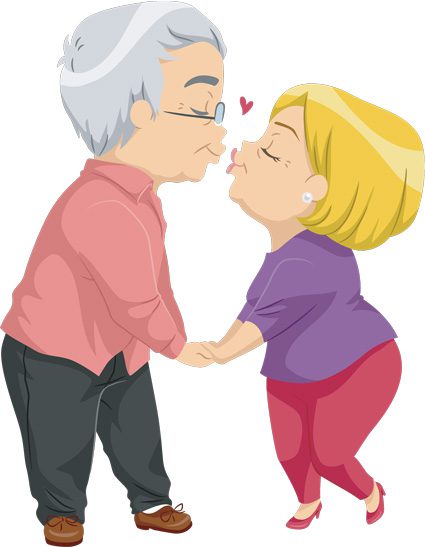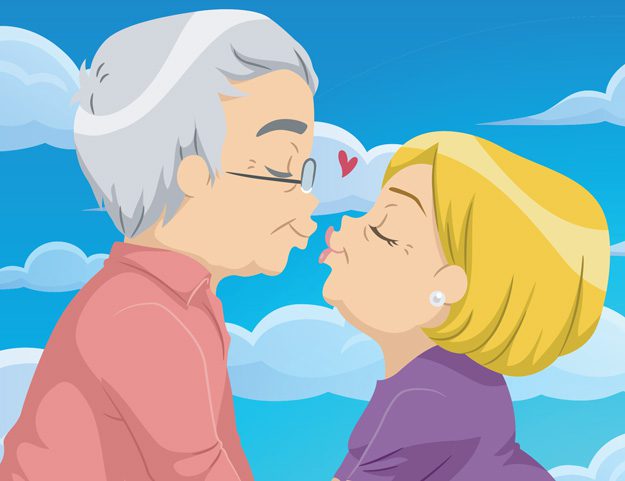 [dropcap]Over[/dropcap] the next 25 years, the Centers for Disease Control estimates that the population of adults over age 65 in the United States will double. As the baby boomers – those born during the prosperous decades after the end of World War II – continue to age, the face of the senior citizen as we know it is changing. Previous images of the ill, the helpless, the rocking chair and knitting needles are being replaced with perceptions of seniors as healthy, happy and independent individuals who are just as committed to enjoying an active life as they were during their younger years.
[dropcap]Over[/dropcap] the next 25 years, the Centers for Disease Control estimates that the population of adults over age 65 in the United States will double. As the baby boomers – those born during the prosperous decades after the end of World War II – continue to age, the face of the senior citizen as we know it is changing. Previous images of the ill, the helpless, the rocking chair and knitting needles are being replaced with perceptions of seniors as healthy, happy and independent individuals who are just as committed to enjoying an active life as they were during their younger years.
“I think in the past, older adults perceived that later life was a time to slow down and that it was an expectation that they become less involved in the community,” says Dr. Lora Cotton, associate professor of family medicine and the statewide director for the family medicine residency program at the Oklahoma State University Center for Health Sciences. Cotton, who also holds a master’s degree in gerontology, provides primary care for all age groups, and sees many older adult patients on a daily basis, helping them prevent and manage both chronic and acute health problems. She believes the outlook for and of modern seniors is now much brighter than it used to be.
[pullquote]I think there are two major reasons that seniors seem to be staying younger and healthier than ever: improvements in health care and changes in social norms.”[/pullquote] “Today, many seniors perceive later life as an opportunity to engage in life in new ways,” she says. “In other words, they see later life as being a new chapter where they can spend time realizing new goals.”
“In the past, a person was old at 60, most likely with disabling health conditions and not expected to live much longer,” says Marge Jantzen, the manager and coordinator of the INTEGRIS Third Age Life Center, a health and wellness community program for adults over 50 years of age. “Now 60 is middle age and one may live another 20 to 30 years, often with a good quality of life. I think this trend is likely to continue.”
Dr. Laurence Rubenstein, chairman of the Reynolds Department of Geriatric Medicine in the University of Oklahoma College of Medicine — home to the Oklahoma Healthy Aging Initiative — agrees that the tendency toward a long, full life will become a new normal for the older adults of the modern era. “Today’s seniors tend to be more optimistic and health oriented — at least until they lose a critical amount of health and/or function and start to rapidly decline (which happens later in life than it used to). I think this trend of having a longer period of high-functioning life will continue, as long as seniors continue to follow good health and wellness practices.”
 But why now? Other than their vast numbers, what differentiates today’s older adults from their predecessors, and what has spurred this cultural change in perceptions and longevity of modern seniors? While there are many factors, one of the most crucial contributors has been the revolutionary transformation of health care itself.
But why now? Other than their vast numbers, what differentiates today’s older adults from their predecessors, and what has spurred this cultural change in perceptions and longevity of modern seniors? While there are many factors, one of the most crucial contributors has been the revolutionary transformation of health care itself.
“Over the past 100 years, we have had vast improvements in public health and improvements in medicine and medical technology,” says Nancy Van Winkle, Ph.D., professor of behavioral sciences at the OSU Center for Health Sciences.
Cotton agrees. “I think there are two major reasons that seniors seem to be staying younger and healthier than ever: improvements in health care and changes in social norms. Improvements in health care allow for prevention, early detection and treatment of many illnesses so that negative effects on a person’s function are minimized. Natural aging, without serious impact by illness, allows a person to be active and healthy until very late life.”
In addition to radical advances in the health care field, there has been another revolution in recent years: one of information. Jantzen sees increased access to information as a crucial component to better living for today’s seniors.
“Each generation becomes better educated, which brings increased income and access to health care, potentially resulting in fewer health conditions, lower rates of disability and longer life expectancy,” she says. She cites, for example, NIHSeniorHealth.gov, the website of the National Institute on Aging, which is home to health topics, videos and other educational materials geared toward today’s older generation. In addition to access to information, Jantzen believes improved access to health care itself through programs like Medicare has allowed seniors to better detect and treat the illnesses that might have prevented a healthy and long life in the past.
As the health care industry has transformed in the information age, society itself has changed apace. Social expectations and beliefs regarding seniors have undergone a sea of change, much of it again due to the aging of the boomer population.
























